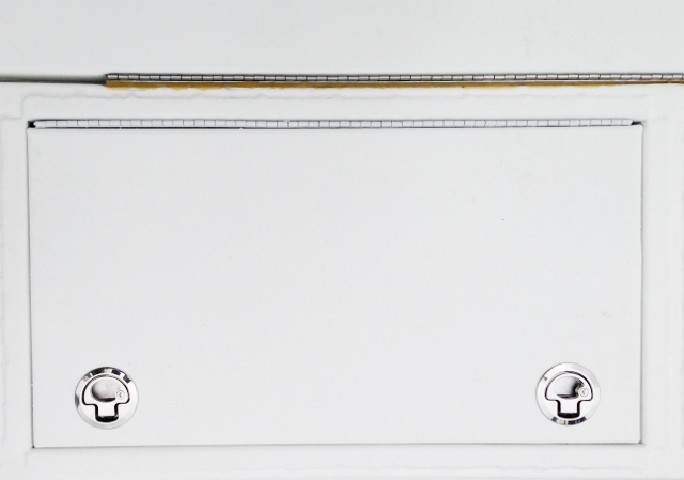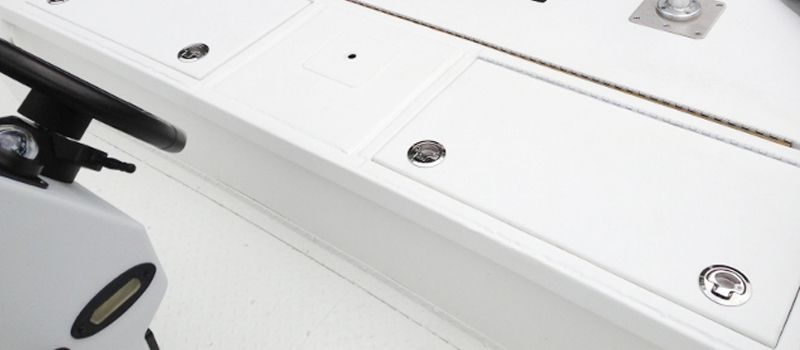
By Gary Harrison
I made a difficult rear-hatch repair on my 2007 aluminum SeaArk 1872 MVJT (modified V-jet tunnel) center console using WEST SYSTEM G/flex Epoxy.
The year before I bought it, my SeaArk center console had undergone a complete rebuild. The entire inside of the boat was sprayed with Line-X® Protective Coating, which makes clean-up super easy but prohibits any additional welding to the aluminum.
Unfortunately, whoever installed the aluminum hinges on the cargo covers, live wells, etc., positioned the hinges too low. So low that raising the 7′ 1″ rear cargo cover beyond a vertical (90°) forced the cover to crush the top edge of the deck. This sprung the hinge and prevented the cover from lying flat against the deck. The hinge needed to be replaced.
Rebuilding a Crushed Aluminum Edge
Before mounting a new hinge, I needed to find a way to rebuild the crushed aluminum edge so the new hinge would install correctly. I loaded my boat and took it to a big-time aluminum fabricator. He looked everything over and agreed it would be impossible to weld because of the Line-X coating. It’s both difficult and expensive to remove and re-apply a Line-X coating.
Eventually, he flat out told me there was nothing he could do for me. I spoke with numerous other boat repair experts, but no one knew of a good fix or offered a suitable fix at any price.
After removing the existing hinge from the rear cargo cover, I saw the biggest problem: the face of the aluminum on the boat side was crushed. Instead of the hinge side being a vertical 90°, it was now closer to 70°.
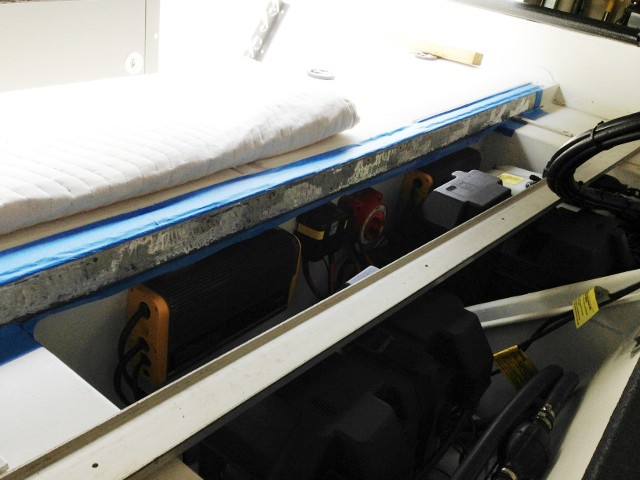
I needed to straighten or square the face where the hinge attached to the boat. This would require me to position a new piece of flat aluminum stock to the boat face to provide a square surface for mounting the new hinge. But this new aluminum strip had to be mounted so that its bottom touched the bottom edge of the boat face while keeping the top almost 1/4″ away, hanging out in midair.
WEST SYSTEM Technical Advisors to the Rescue
I called WEST SYSTEM and talked with their technical advisors. They spent a lot of time educating and guiding me, helping me choose the correct products. I decided to get both G/flex 655 thickened and the G/flex 650 unthickened epoxies. Next, I ordered a 2″ x 6′ x 1/8″ stainless steel hinge, a 2″ x 6′ x 1/16″ piece of aluminum stock, and a bunch of rivets.
G/flex 655 Thickened Epoxy allowed me to use a putty knife to put a heavy bead of epoxy along the bottom and side edges where the hinge was to be positioned on the boat (approx. 1 3/4″ from the top). Using a long straightedge, I slid the piece of flat 1/16″ x 2″ aluminum stock square against the boat face where I’d applied the bead of G/flex. I pressed the aluminum firmly, forcing the epoxy to form a bead at the bottom and side edges. I secured the aluminum strip to the boat face with painter’s tape while the epoxy cured.
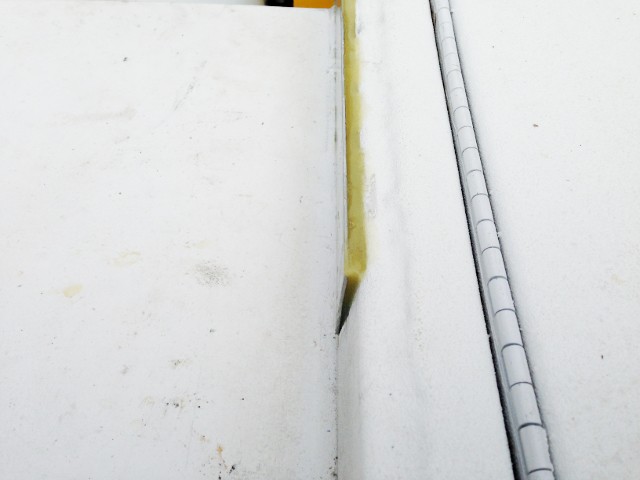
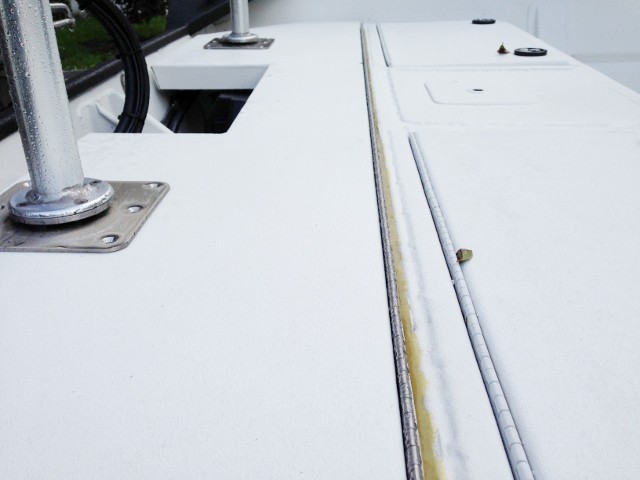
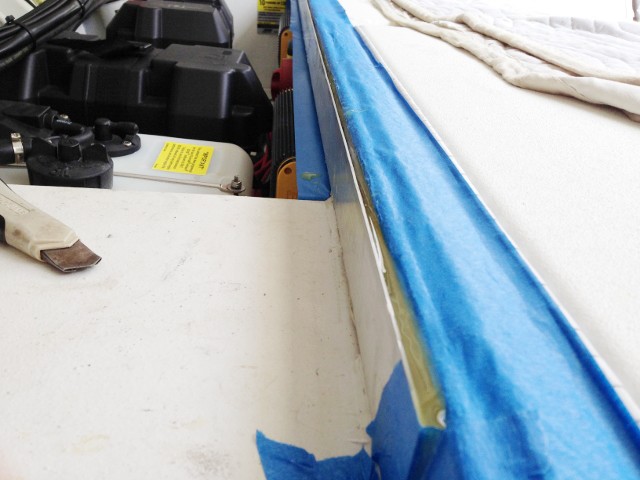
After about two hours, the G/flex Thickened Epoxy was firm enough to trim the bead along the edges of the aluminum. With the aluminum strip mounted at the base and sides of the boat face, I needed only to fill in the remaining gap with G/flex 650. Using a throw-away syringe, I back-filled the gap with unthickened G/flex. After this cured, I had a new, square (90°), aluminum “face” into which I drilled and, using rivets, mounted the new 2″ stainless steel hinge.
Welding vs. West System G/Flex
Because the inside of my boat was coated with Line-X and welding was off the table, I don’t believe there were any other ways of replacing the rear cargo hinge that would have worked so well. Because WEST SYSTEM offers their G/flex epoxy in both unthickened 650 and thickened 655, their customers have options that haven’t previously been available. I don’t think I could have solved my particular problem without both G/flex 650 and 655.
The final step was painting the exposed epoxy along the top edge of the epoxied joint so it blended with the deck, and made the repair virtually invisible.
Author’s note: I wrote this article soon after completing the hinge replacement, back in mid-2014. It’s 2019 now and the hinge still functions properly. Considering this cargo cover is more than 7′ long, made from 3/16 aluminum (with an extra 1/8″ plus of Line-X), this is a very heavy, bulky cover. The G/flex repair has worked out perfectly.
